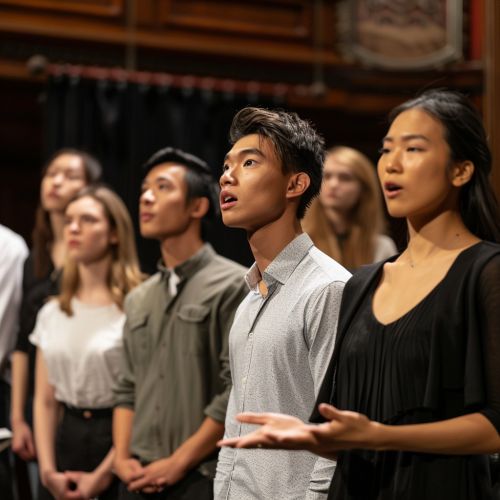Audition
Overview
Audition refers to the process by which individuals are assessed for their suitability for a specific role, typically in the fields of performing arts, broadcasting, or sports. The term is derived from the Latin word 'audire', which means 'to hear'. Auditioning is a critical part of the selection process, providing an opportunity for individuals to demonstrate their skills, talent, and suitability for a role in a controlled environment.


History
The concept of auditioning has a long history, dating back to ancient times. In the world of theatre, for instance, auditions were used in ancient Greece to select members of the chorus for theatrical performances. In the modern era, auditions have become a standard part of the selection process in a wide range of fields, from music and dance to film and television, and even in areas such as sports and business.
Types of Auditions
There are several types of auditions, each designed to assess different aspects of an individual's suitability for a role. These include:
Open Auditions
Open auditions, also known as cattle calls, are open to anyone who wishes to audition. These are typically used for roles where a large number of individuals are required, such as extras in a film or members of a chorus in a musical.
Closed Auditions
Closed auditions are by invitation only, typically for roles that require a specific skill set or level of experience. These are often used for principal roles in film, television, and theatre productions.
Screen Tests
A screen test is a type of audition used in the film and television industry, where an actor is filmed performing a scene from the script. This allows the director and producers to see how the actor appears on screen and how they interact with other actors.
Cold Reading
A cold reading is an audition process where the actor is given a script or scene to perform with little or no preparation time. This tests the actor's ability to quickly understand and interpret the material.
The Audition Process
The audition process varies depending on the field and the specific requirements of the role. However, there are some common elements that are typically involved in most auditions.
Preparation
Preparation is a critical part of the audition process. This can involve learning lines, practicing skills or routines, researching the role or project, and preparing any required materials such as headshots or resumes.
Performance
The performance is the central part of the audition, where the individual demonstrates their skills, talent, and suitability for the role. This can involve performing a prepared piece, improvising a scene, demonstrating a specific skill, or participating in a group activity.
Evaluation
Following the performance, the individual's audition is evaluated by a panel of judges or decision-makers. This can involve assessing the individual's technical skills, their interpretation of the material, their suitability for the role, and their overall performance.
Challenges and Criticisms
While auditions are a standard part of the selection process in many fields, they are not without their challenges and criticisms. Some individuals find auditions stressful and intimidating, while others question the fairness and objectivity of the process. There are also concerns about the potential for bias and discrimination in the audition process.
Conclusion
Despite these challenges, auditions remain a critical part of the selection process in many fields, providing an opportunity for individuals to demonstrate their skills, talent, and suitability for a role. As such, they are likely to remain a key part of the selection process for the foreseeable future.
